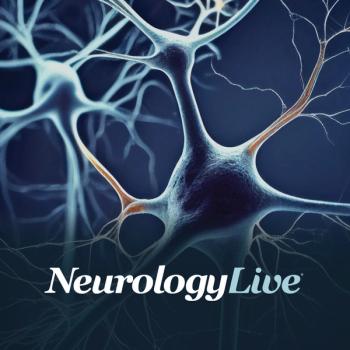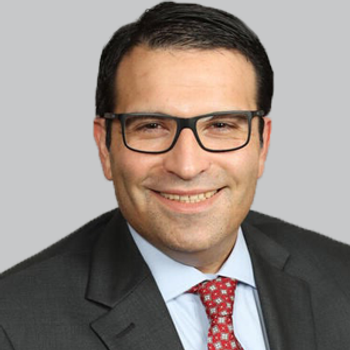
- June 2021
- Volume 4
- Issue 3
Vivistim Paired VNS System Proves Effective for Post-Stroke Upper Extremity Motor Impairment
After in-clinic therapy, participants in the Paired VNS group showed a 5.0-point improvement in the Upper Extremity Fugl-Meyer Assessment compared to 2.4 points in controls.
In a recently published randomized, controlled clinical trial, MicroTransponder’s Vivistim Paired Vagus Nerve Stimulation (VNS) System showed 2-3 times the improvement in upper extremity motor impairment and function in patients up to 10 years post-stroke compared with controls who received intense rehabilitation alone.1,2
Among 108 patients randomly assigned to treatment (VNS group, n = 53; control group, n = 55), the mean Fugl-Meyer Assessment-Upper Extremity (FMA-UE) score increased by 5.0 points (standard deviation [SD], 4.4) in the VNS group on the first day after completion of in-clinic therapy compared to 2.4 (SD, 3.8) points in the control group (between group difference, 2.6 [95% CI, 1.0-4.2]; P = .0014).
"This is the first study to find clinically and statistically significant effects of a neuromodulation therapy for people with arm and hand weakness after chronic stroke,” Jesse Dawson, MD, BSc, professor of stroke medicine, University of Glasgow, said in a statement.1 “We saw improvement for the VNS group in both impairment and functional measures compared to controls. In particular, the clinically meaningful response rate doubled with paired VNS for both impairment and functional outcomes.”
The Vivistim Paired VNS System stimulates, as the name implies, the vagus nerve during task-specific rehabilitation. Stimulation of the vagus nerve has been shown to trigger the release of brain neuromodulators including acetylcholine and norepinephrine that strengthens motor circuits associated with movement, enabling the brain to effectively relearn the task.
READ MORE:
Patients in the VNS group received 0.8 mA, 100 μs, 30 Hz stimulation pulses, lasting 0.5 seconds whereas those in the control group received 0 mA pulses. Each patient received 6 weeks of in-clinic therapy, 3 times per week, totaling 18 sessions, followed by a home exercise program. After 90 days of in-clinic therapy, a clinically meaningful response on the FMA-UE score was achieved in 23 (47%) of 53 patients in the VNS group compared to 13 (24%) of 55 patients in the control group (between group difference, 24% [95% CI, 6-41]; P = .0098).2
The World Motor Function Test (WMFT)-Functional score was significantly increased in the VNS group compared with the control group at 90 days after the end of in-clinic therapy (0.5 [SD, 0.4] vs 0.2 [SD, 0.3]; between group difference, 0.30 [95% CI, 0.16-0.43]; P <.0001). In a post-hoc analysis, 30 of 53 (57%) of participants in the VNS group achieved a clinically meaningful response on the WMFT-Functional rest compared to 12 of 55 (22%) patients in the control group (P <.0001).
At least 1 adverse event (AE) occurred in 81% (43 of 51) and 76% (42 of 55) of patients in the VNS group and control group, respectively. There were 3 serious AEs in 2 (4%) participants in the VNS group (1 each of urinary tract infection, hyponatremia, and insomnia), and 2 severe AEs in 2 (4%) participants in the control group (1 headache and 1 syncope). No deaths were reported and none of the serious AEs were related to treatment device.
There were no unexpected AEs or serious AEs reported associated with the device. Researchers noted that there was 1 case of vocal cord palsy following device implantation in a control participant, which was resolved after 5 weeks.
"The results of this clinical study suggest that the addition of VNS enhances the effect of best practice stroke rehabilitation. It is also important to note that our physical and occupational therapists were able to easily incorporate the Vivistim System with intense rehabilitation therapy,” Teresa Kimberly, PhD, PT, Director, Brain Recovery Lab, MGH Institute of Health Professions, said in a statement.1
REFERENCES
1. Positive stroke rehabilitation clinical trial results for the Vivistim Paired VNS System published in The Lancet. News release. MicroTransponder. April 22, 2021. Accessed May 3, 2021. https://www.prnewswire.com/news-releases/positive-stroke-rehabilitation-clinical-trial-results-for-the-vivistim-paired-vns-system-published-in-the-lancet-301275565.html
2. Dawson J, Liu CY, Francisco GE, et al. Vagus nerve stimulation paired with rehabilitation for upper limb motor function after ischemic stroke (VNS-REHAB): a randomized, blinded, pivotal, device trial. Lancet Neurol. Published online April 24, 2021. doi: 10.1016/S0140-6736(21)00475-X
Articles in this issue
over 4 years ago
The State of Coma Care: A Call for Actionover 4 years ago
Refining the Approach to Seizure Rescue Medicationsover 4 years ago
Myostatin Inhibition in Amyotrophic Lateral Sclerosisover 4 years ago
Do We Finally Have a Useful “Sed Rate” for Multiple Sclerosis?over 4 years ago
Holding On to Hope in Huntington Diseaseover 4 years ago
Aducanumab Approved for Alzheimer Disease TreatmentNewsletter
Keep your finger on the pulse of neurology—subscribe to NeurologyLive for expert interviews, new data, and breakthrough treatment updates.


































